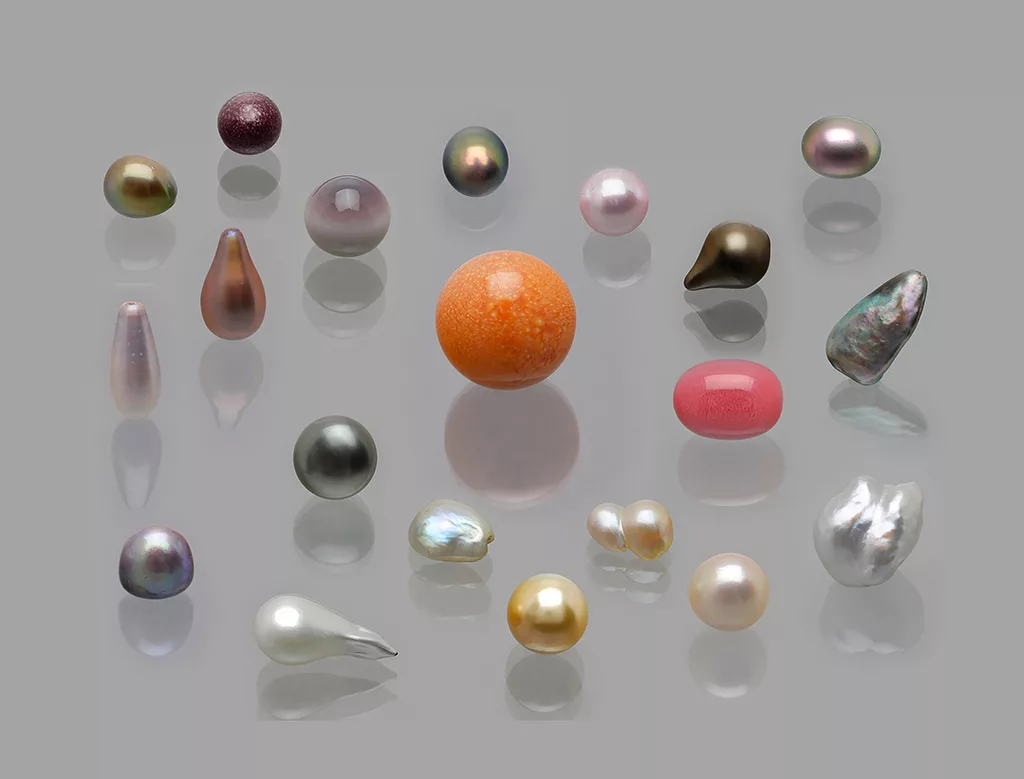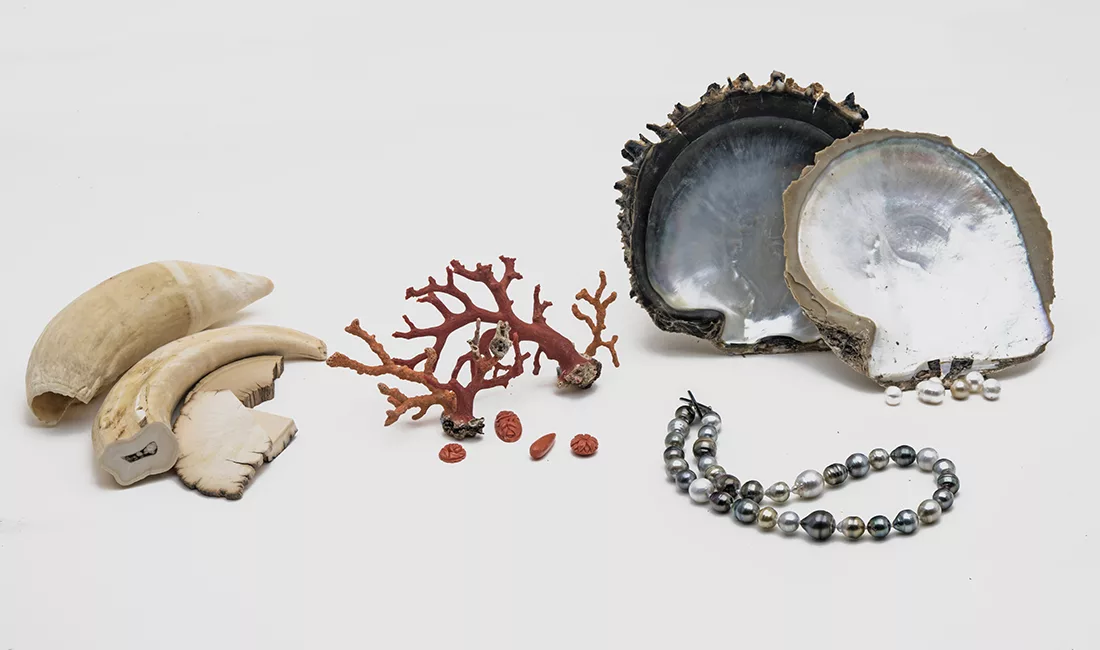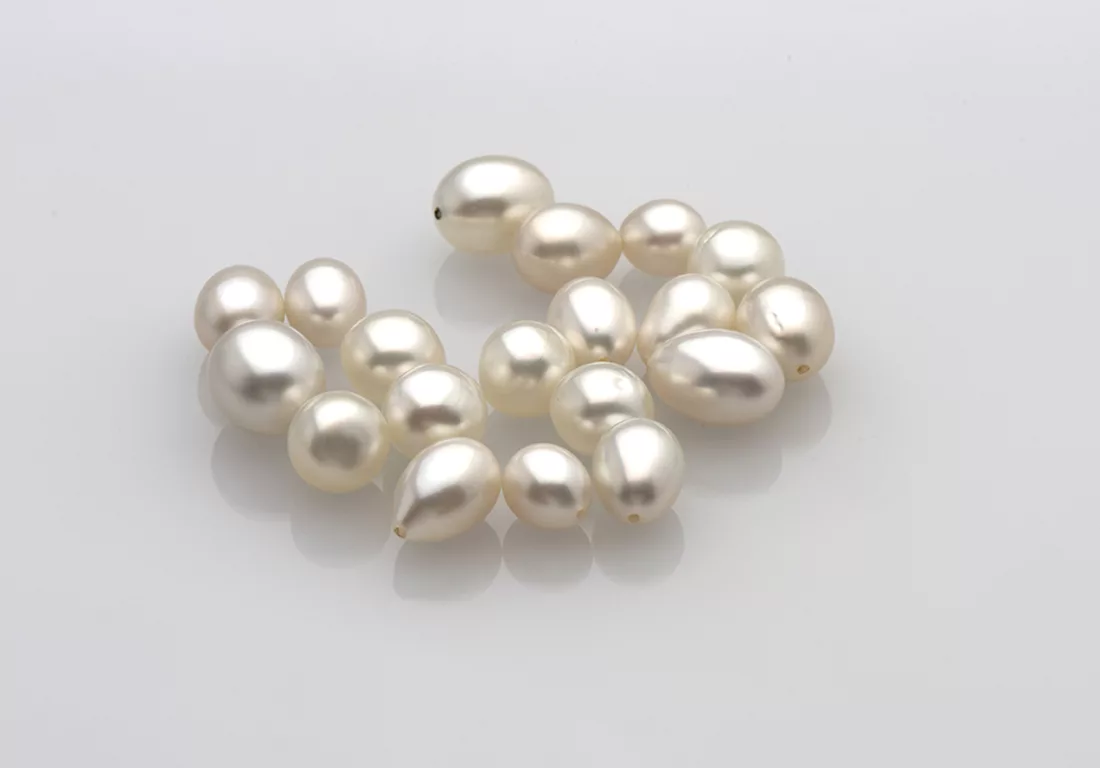Cultured pearls in a bracelet of historic design
An antique-style bracelet with diamonds and pearls was recently submitted to SSEF for testing (Figure 1). Despite the complex setting, we were able to analyse all the pearls and found, that five of the pearls in this bracelet were in fact beaded cultured pearls (Akoya type), whereas the remaining 26 were saltwa
Natural pearls dyed green
The body colour of pearls is normally related to the presence of natural colour pigments produced by the mollusc during pearl formation. Another option is to colour pearls artificially, with dyeing being the most readily available method. Often applied to rather low-quality freshwater cultured pearls, these tre
DNA fingerprinting and age dating of pearls and corals at SSEF
Pearl testing was long limited to determining whether a pearl is natural or cultured, and whether a pearl has been treated or not. As we have considerably invested in pearl research in recent years, we have achieved significant breakthroughs, namely DNA fingerprinting for species identification and radiocarbon
New pearl oyster species: pinctada persica
We recently tested a pearl jewellery set that consisted of 63 natural pearls, with 61 of them being strung on a thread and two additional loose natural pearls. To our knowledge, this is the first time that pearls from Pinctada persica have been reported.
Myanmar Gold-Lipped Cultured Pearls
Myanmar Gold-Lipped Cultured Pearls. IGC 2021 Proceedin […]
One natural pearl in a cultured pearl necklace
Testing pearl necklaces can be rather painstaking work, […]
DNA Fingerprinting of Pearls, Corals and Ivory: Research Update
SSEF pioneered DNA fingerprinting of pearls in 2013, in collaboration with scientists from ETH Zürich. This was the first published report of oyster DNA extraction from a pearl, allowing us to trace and fingerprint pearls of unknown origin and match them to the specific oyster species in which they formed.
Chasing Cultured Pearls at SSEF: Cultured Pearls using a Natural Pearl as a Bead
As a leading pearl testing laboratory worldwide, the SSEF has analysed in the past few months a large number of pearls for our clients. Besides natural pearls of impressive size or historic provenance (e.g. the pearl pendant of Marie Antoinette and the so called Dodge pearls), we regularly identify and sort out
Pipi Pearls from the Pacific
first published in Facette 21 (February 2014) In 2 […]









